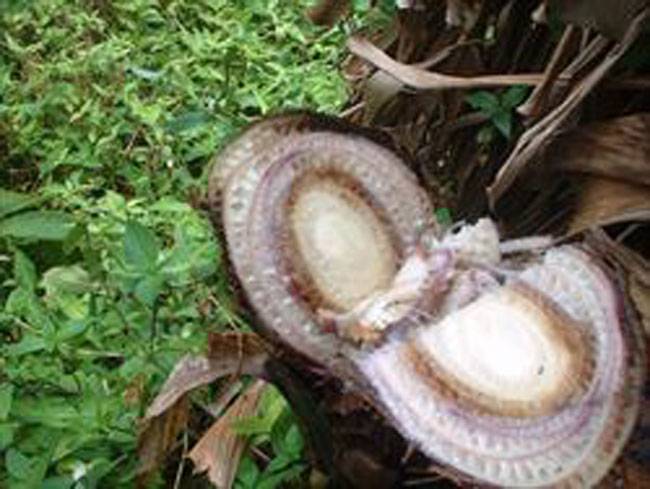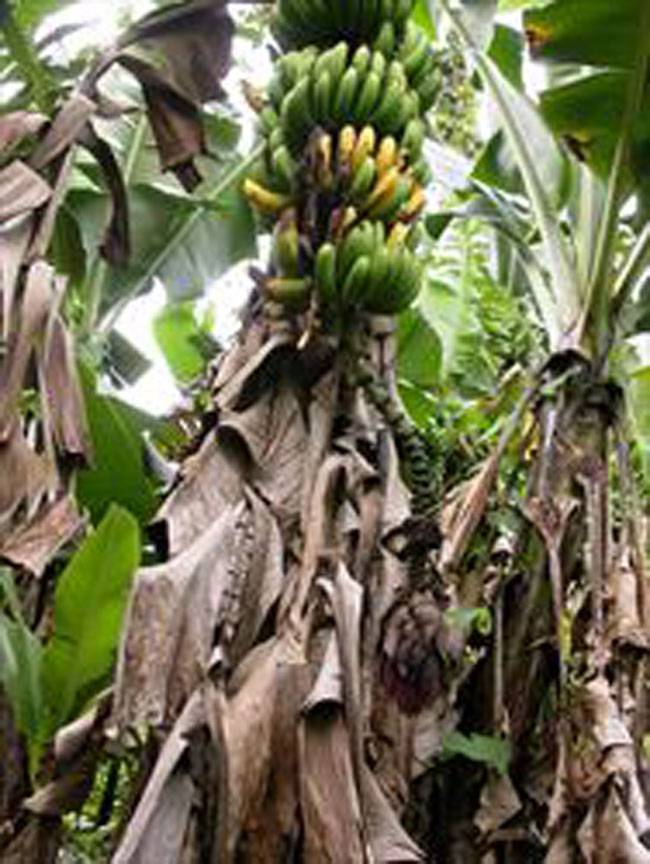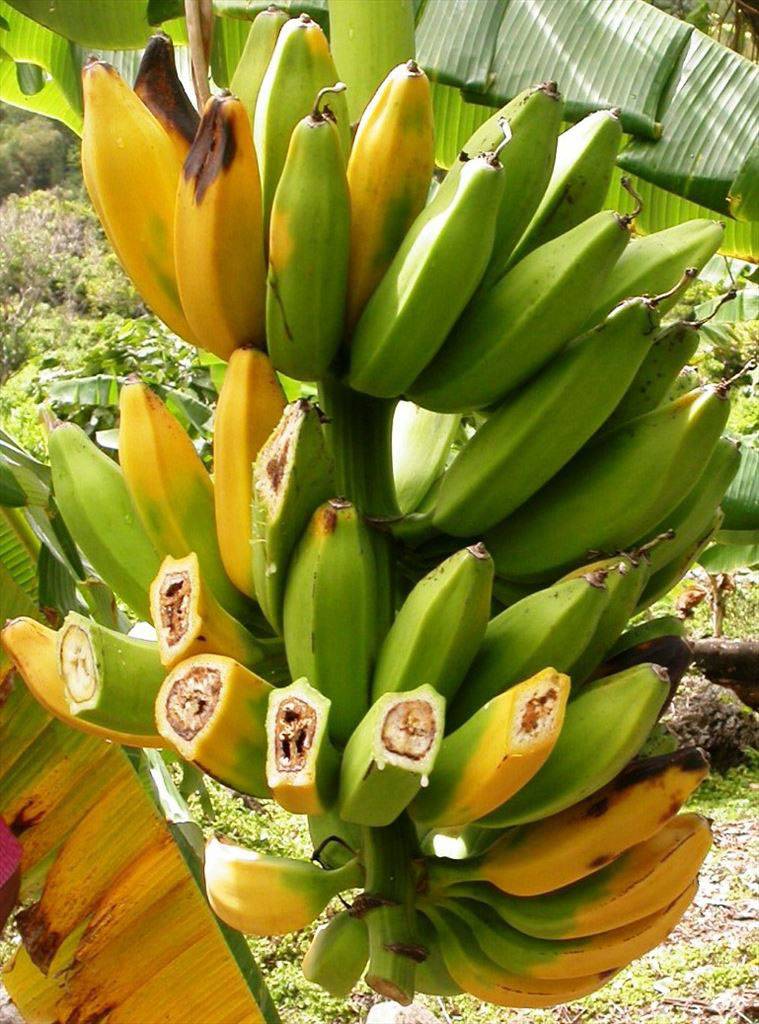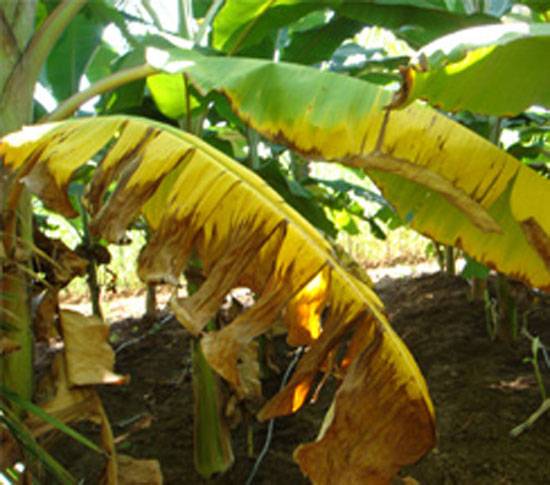Banana-TC
Moko Disease

Ralstonia solanacearum
Bacterial Disease

Ralstonia solanacearum
Bacterial Disease

Ralstonia solanacearum
Bacterial Disease

Ralstonia solanacearum
Bacterial Disease

Ralstonia solanacearum
Bacterial Disease
It is a Soil borne disease may spread by insects also.
Moko disease of banana is caused by the bacterial pathogen Ralstonia solanacearum formally Pseudomonas solanacearum. This soil-borne bacterium causes bacterial wilt in bananas and is also the causal agent of brown rot of potato, bacterial wilt or southern wilt of tomato, tobacco, eggplant and some ornamentals.
R. solanacearum primarily enters the plant through wounds in the roots made by farming tools and equipment, nematodes or insects; and through cracks where secondary roots emerge. Infection can also occur from the mouth parts of infected insects feeding on the flowers. Once the bacteria reaches the large xylem element, it spreads throughout the plant. R. solanacearum is able to dissolve the cell walls and create slimy pockets of bacteria and cell debris. These along with the production of highly
polymerized polysaccharides increases the viscosity of the xylem and block the tissue.
Ralstonia solanacearum (Race 2) prefers high temperatures and high soil moisture. The bacterium is found in many different soil types and over a wide range of soil pH.
The way plants become infected determines the sequence of symptoms. If infected from the roots or rhizome, yellowing and wilting of the older leaves occurs and they collapse. If infected through the male flowers by visiting insects carrying bacteria, then flower buds and the flower stalks become black and shrivelled, fruits rot, leaf sheaths become infected and plants collapse and die.
Spread over relatively short distances occurs in a number of ways: (i) by insects visiting male flowers and the scars left by leaf-like bracts which ooze liquid containing the bacterium; (ii) in flood or irrigation water; (iii) in suckers taken from infected mother plants; and (iv) on knives during cultural operations, e.g., pruning and de-suckering. Long distance spread is associated with movement of infected fruit and suckers in exchanges between farmers. Survival occurs in soils for several years, aided by colonisation of weed. Survival in banana waste is for a short time only, and not considered important in the epidemiology of this disease.
Note, differences between strains: some more likely to be transmitted by insects, or through root contact and contaminated tools for pruning and de-suckering.
The bacterium survives in infected plant material, vegetative propagative organs, and soil. The disease can be spread across long distances by the movement of planting material, such as, infected ‘daughter’ suckers, soil on planting material, contaminated planting tools and equipment.





